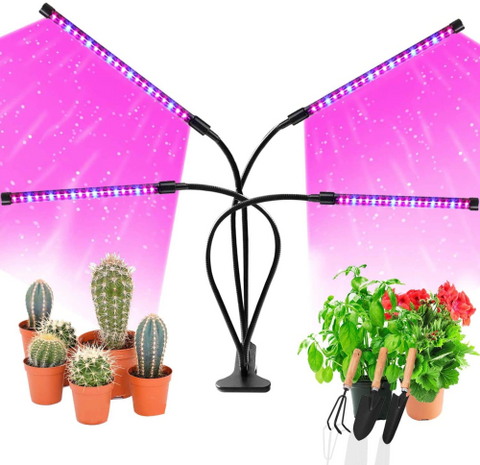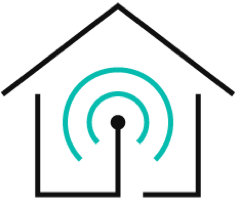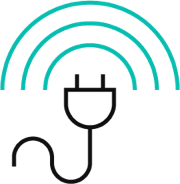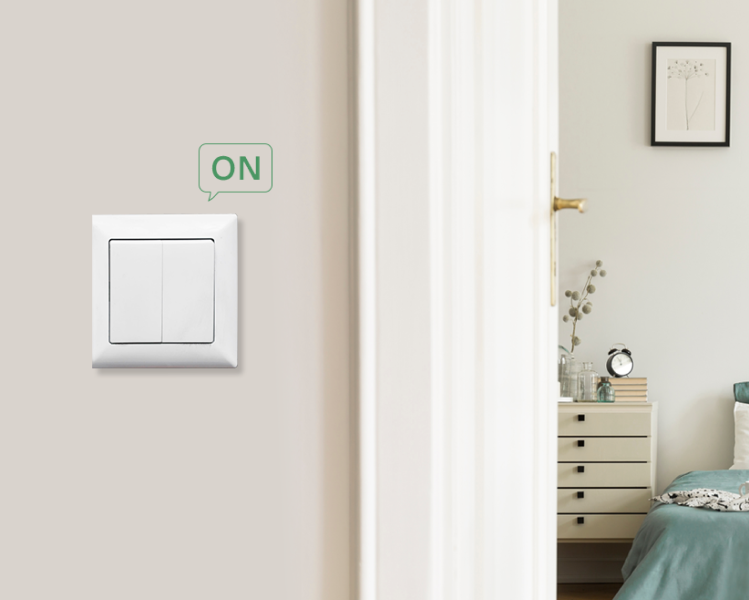Do you struggle with cultivating your plants inside? Is there no natural light in your dark apartment? Or you may reside in a region with long, gloomy winters.
If so, think about employing grow lights.
Grow light bulbs are a terrific method to get the most out of your plants and have several advantages for indoor hydroponic gardening. An extraordinary approach to guarantee that your plants receive the light they require to flourish is with grow lighting for indoor plants.
Whatever your requirements, grow lights can instantly offer your plants the hours of simulated sunlight they require for strong, healthy development.
They are simple to set up and may provide any color spectrum needed for any growth stage. The lamps have a long lifespan, low wattage, and run cool to the touch.
Due to this, they are also affordable. You'll also save money by making fewer journeys to the nursery by growing your seedlings!
EVVR offers an excellent range of innovative home solutions for all your needs. Whether you want to overhaul your place's complete infrastructure or just your nursery, EVVR has something special for you!
- Grow Lights & Indoor Plants
- Types of Grow Lights According To Their Needs
- Advantages of Using Grow Lights For Indoor Plants
- Best Grow Lights For Indoor Plants In 2023
- EVVR - Your Trusted Smart Home Partner
Grow Lights & Indoor Plants
Artificial lights, called "grow lights" are used all year to support indoor plant growth. To meet the needs of various plant species, grow lights are available in multiple color spectrums and light intensity options. Houseplants can receive enough light even in places without access to natural sunlight thanks to indoor grow lights, which are crucial gardening tools.
Growth lights convert electrical energy into photons, tiny light particles that promote photosynthesis and plant development. The spectrum of wavelengths the human eye interprets as color makes up the finest light sources for photosynthesis. Fruiting and flowering plants respond best to red light, while vegetative development is accelerated by blue light.

Types of Grow Lights According To Their Needs
Plants require different kinds and exposure to light during various stages of their growth. In this section, we will look at three different types and periods of plants and the specification of lights for their better development.
For Budding Seeds
Full spectrum bulbs (5,000–6,500 K) will mimic natural sunshine and grow robust and sturdy seedlings.
Orientation: Put your seedlings right up against the grow light. Move your plants closer if they are weak, pale, or "leggy" seedlings because this is a sign that they are having trouble getting enough light. Unless you have a high-intensity LED bulb, which can be around a foot away from the plants, bulbs can be placed 6 inches from the top of seedlings. As your seedlings grow, you may change the light level with a grow light system that has an easy-to-tune bulb.
Exposure Time: Seedlings need 14 to 16 hours of bright light daily.
For House Plants
Since we keep many plants indoors as houseplants, each species must be considered. Snake plants, pothos, and other foliage plants that tolerate shade can be illuminated with a cool-colored, low-intensity light. A broad-spectrum, high-intensity bulb is necessary for growing cacti, succulents, and blooming houseplants like orchids and hibiscus.
Orientation: Houseplants don't require their grow light to be close to them, especially if you supplement it with natural light from a nearby window. Most indoor plant foliage can be 12 to 24 inches from grow lights.
Exposure Length: Your houseplant may require anywhere between 6 and 12 hours of light each day, depending on the kind. Poinsettia and Christmas cacti are short-day plants that require uninterrupted periods of darkness and will only bloom when their daily light requirements are less than 12 hours.
For Indoor Edibles
Color temperature: A complete spectrum light bulb will grow many healthy plants, like houseplants and seedlings. Plants that bear fruit or flowers, such as citrus and cherry tomatoes, may need a warmer bulb (2,500-3,000 K). A colder bulb (6,000 K) will work nicely if you only grow leafy greens.
Plant distance: Grow lights can be placed 6–12 inches apart from vegetables and herbs.
Period of Exposure: Aim for 10 to 12 hours of light each day for leafy greens like spinach and lettuce. For small pepper, tomato, and basil species, attempt to simulate sunny indoor growing conditions with a high-output LED light operating for 14–18 hours per day. Sun-loving herbs and fruiting plants have substantially greater energy needs.
Advantages of Using Grow Lights For Indoor Plants
This section will examine some of the top benefits of grow lights to produce indoor plants.
Energy-Efficient
You can lower your electric bill by using grow lights for indoor plants. Grow lights will help you save money on your power bill because they consume about 17% less energy than other types of lighting for indoor plants.
Independence From Climate
Plants can be grown indoors under grow lights year-round. Regardless of the weather outside, you can grow plants indoors all year long using grow lights.
Better Control Over Quality & Quantity of Light
Your plants' exposure to light and darkness is something you can regulate. This is crucial because plants require a specific night level to develop. Grow bulbs allow you to control how much light and darkness your plants receive.
Faster Growth
Plants can grow more quickly with the aid of grow lights. Compared to plants grown in natural light, plants cultivated in artificial light grow more rapidly. This is so plants may produce the ideal amount of light that grow lights give.
Better Flower Production
You may grow more flowers by using grow lights. Flowers benefit from being produced under grow lights because they require more light than other plants do. Additionally, grow lights might help them endure long after flowers are cut.
Best Grow Light For Indoor Plants In 2023
After going through the specifications and benefits of smart grow lights, let us look at some of the best options in the market for smart grow lights. If you pick a light with no innovative options like remote control and dimming, you can get EVVR In-Wall Relay Switch to get all the benefits.
Now, to the best smart grow lights!
LBW Grow Light
This is one of the most adaptable and reasonably priced grow lights available, allowing you to start growing almost anywhere. The light is supported by a tripod that is easily portable and has an adjustment range of 15 to 47 inches.
The LBW Light provides full-spectrum light, which is the closest thing to natural sunlight for maintaining the health and growth of your plants. It uses only 30 watts of energy and is just as effective as grow lights that use 150 watts. One of the quickest ways to begin using grow lights is with this unit because it is simple to put together and has a warranty.

EZORKAS Dimmable Grow Light
With this four-headed grow light, you can illuminate a large area and obtain the ideal angle. It features 48 lamp chips, featuring a combination of scientifically produced red and blue wavelengths for the best grow light for indoor plants. The light includes nine dimmable modes, three distinct timing options, and an adjustable design. It would make the ideal desktop light for anyone raising indoor plants in a basement or additional room. To get those seedlings started, clip them to the edge of a desk, table, or shelf.

GE BR30 LED Grow Light
Are you looking for a practical approach to building a grow room indoors? Use single bulbs to transform your existing lamps or lights into grow lights. It's simple to get started with this hobby with this LED bulb. It would be best grow light for indoor plants if you replaced it with a standard bulb and were ready to go.
With low-heat generation, the bulb only consumes nine watts, making it one of the most desirable alternatives. These single bulbs are ideal for the do-it-yourselfer who wants to design a room to suit their needs. They are also helpful for individuals who wish to try seed-starting for the first time.

RHM LED Grow Light
An adjustable tripod is useful when setting up an indoor grow area. The alternatives for this light are numerous. There are ten various brightness levels, as well as options for lighting mode and time. These are all excellent choices that let you change as the surrounding weather does. You may select red illumination to encourage blooming or white lighting for indoor plants to more nearly resemble sunshine, for instance.

Mosthink LED Plant Grow Light
Here is another fantastic alternative for individuals who enjoy DIY and creating spaces that meet their needs. You will receive two short light strips that may be mounted almost anywhere with the provided double-sided tape. Attach them to an existing shelf, a grow box or even the wall for a vertical growth area. Once it is configured, you can program the timer to shut off manually at the same hour every day. To design a unique grow space in your house, purchase however many strips you require. These would look fantastic when combined with a recycled wooden shelf to provide you with a defined area while also keeping it reasonably priced.
EVVR - Your Trusted Smart Home Partner
Smart grow lights are just a part of the intelligent drive that EVVR is spearheading. We want homeowners to have the liberty and freedom of the most efficient and comfortable living. Whether it is a light in your bedroom or your Wi-Fi, we want everything to be innovative and working for your benefit.
Connect with us today and step into the future of smarter and brighter living!















